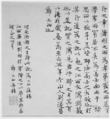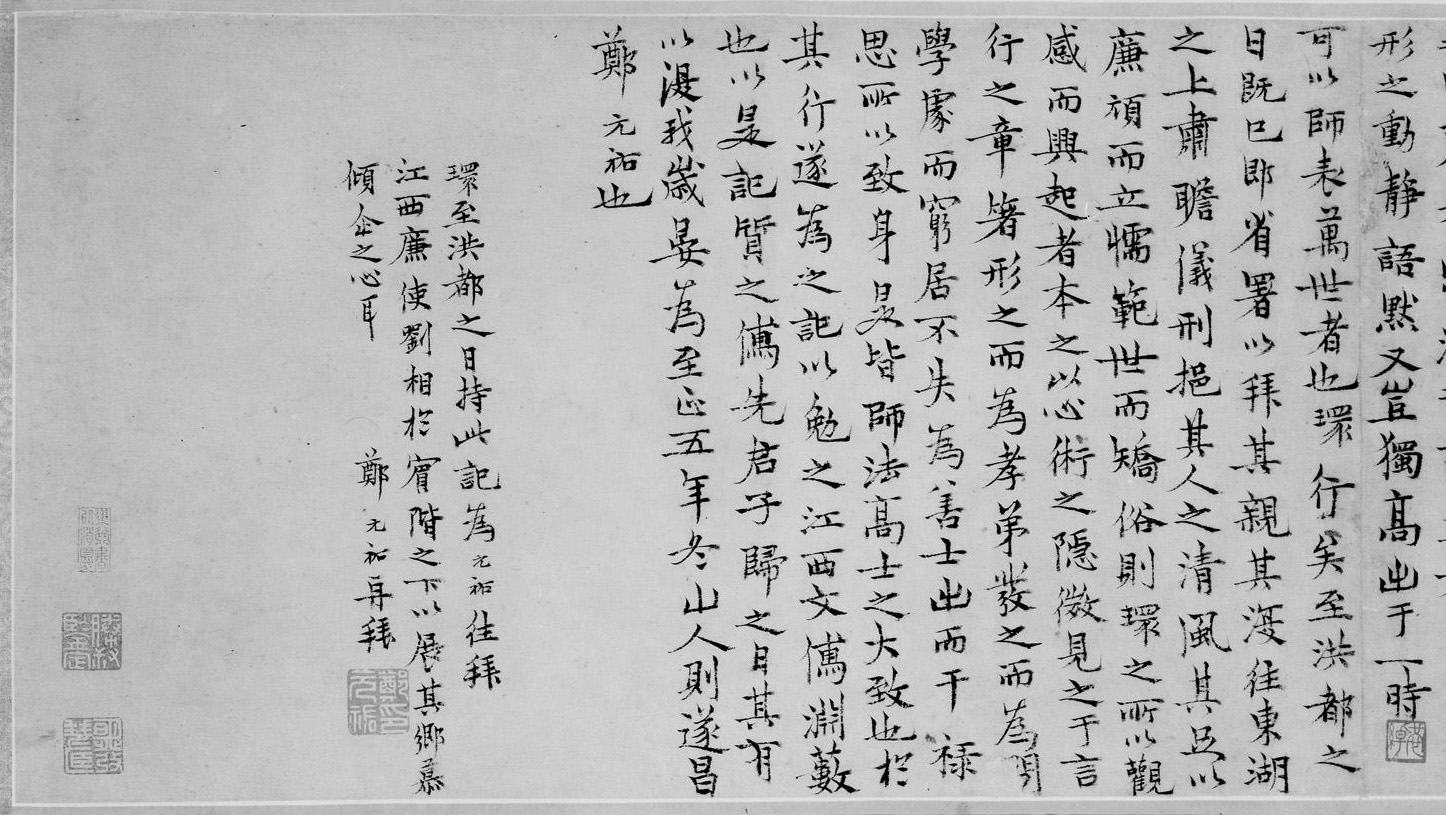Record of the Following One's Ancestor Studio
Zheng Yuanyou Chinese
Not on view
This text, written when scholars living in retirement became intimately identified with their gardens or studios, is a rare fourteenth-century example of a new literary genre, the "studio memoir." But as Zheng's brief postscript makes clear, the essay was also intended to function as a letter of introduction for its recipient, an aspiring young student named Xu Huan. In the postscript, Zheng asks Xu Huan to show the scroll to a high-ranking official who might help Xu with an appointment. By adopting the form of a studio history in his essay, Zheng is able to discuss Xu Huan's illustrious family background and virtuous intentions while maintaining a tasteful and face-saving indirectness.
The elegance of Zheng Yuanyou's calligraphy reflects the refined sensibilities of both the writer and the recipient. Zheng was among the first to develop a distinctive new calligraphic style of elongated characters and exaggerated turning strokes and hooks that was based on late Han dynasty archaic models. This antiestablishment style is commonly associated with Zheng's most famous pupil, the recluse-artist Ni Zan (1306–1374), who made it synonymous with scholars living in retirement. Zheng's early use of this style suggests that it was not Ni's personal invention but a widespread cultural phenomenon expressive of the reclusive spirit of the times.
Due to rights restrictions, this image cannot be enlarged, viewed at full screen, or downloaded.
This artwork is meant to be viewed from right to left. Scroll left to view more.




